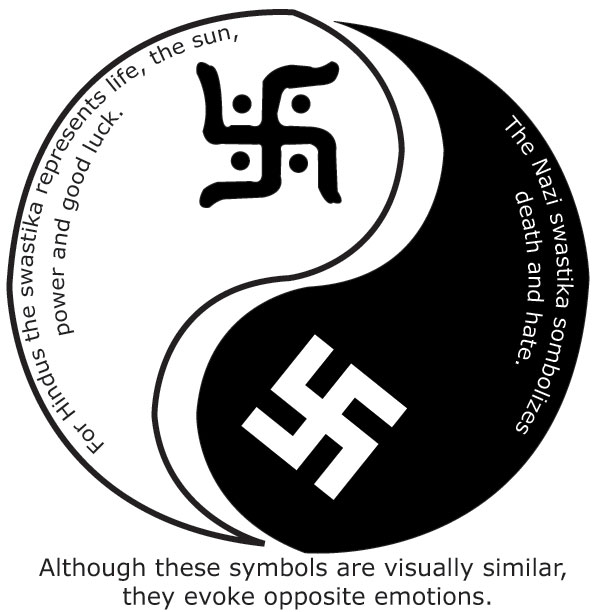Thumbs up or up yours, open to interpretation
Symbols retain different meanings to different people, cultures, religions
It is very easy to fall prey to one’s individual ethnocentric point of view. Whether you are traveling, starting a business in another country or even meeting your next door neighbor, it is very important to understand how different symbols and gestures are perceived by different people.
One of the most powerful ancient symbols, the swastika, invokes different emotions for different cultures across the globe including China, Japan, India and Southern Europe.
The word swastika comes from the Sanskrit language, which means to be good. The swastika is revered as a symbol of life, the sun, power and good luck in Hinduism, Buddhism and Jainism.
Since the 20th century, the atrocities carried out by Nazi Germany during World War II have caused the same symbol to signify death and hate. These completely different meanings of the swastika cause problems in today’s world. The Nazis were so effective with their use of the symbol that many people do not even know the other meaning of that symbol.
The two completely different interpretations of the same symbol can lead to hard feelings.
For instance, the recent Hindu festival of Diwali uses the symbolism of light and the swastika symbol to celebrate light and goodness. However, the use of this symbol can be misunderstood in the western world and bring back memories of hate and painful loss.
Apart from religious symbols, political symbols can also lead to a flare-up in feeling. One recent issue that has been stirring a lot of controversy here in the United States is the creation of a speciality plate, featuring the Confederate battle flag.
The flag means different things to different people. For some people, the Confederate battle flag represents regional pride or a refusal to conform and defiance of authority. For others, it is a bitter reminder of racism, slavery and hardships faced by their forefathers.
Then there are symbolic gestures that define an action. These gestures are not ancient symbols; they take the place of verbal communication and are used commonly. Gestures should be used carefully as they might have completely different meanings in other cultures.
For instance, the thumbs up gesture in America means good job, while in South Asia it symbolizes failure. This same hand gesture equates to the middle finger for Greeks. So if you are in a Greek restaurant and love the food, do not give the chef a thumbs up.
The OK sign gesture in America indicates something is good, but the same gesture symbolizes worthless or zero in Tunisia, France and Belgium. In Japan this gesture simply means money.
Holding up two fingers in the air could mean victory, peace or just the number two, but in New Zealand, Australia and Britain, this gesture is equivalent to the middle finger in America.
Symbols and gestures, religious or political, are seen and interpreted through personal experiences. They have the power to evoke raw and powerful emotions in people.
As the world becomes a global village with increasing interaction across cultures, it is important to be aware of emotional undercurrents and learn how people perceive different symbols and gestures. In a world where interacting with other cultures and countries is just a click away, such understanding will help us live in harmony.


